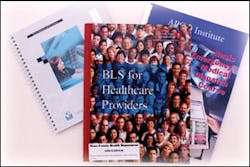Fire departments have long known the benefits of proper training. Besides the obvious need for even the newest firefighters to function safely under a wide variety of dangerous conditions, organizations such as the NFPA, ISO and OSHA establish minimum criteria that must be met. These requirements apply across the board to communities small and large.
The need for knowledge is also far from static. During recent times, regulations for a variety of issues such as blood-borne pathogens have emerged, and numerous levels of certification have evolved for hazardous materials. State laws may also establish licensing classifications that apply to apparatus drivers, and insurance companies often mandate the completion of defensive driving courses.
With all of this focus on formal education, it would be natural to think that the workforce that impacts all emergency calls – the dispatchers – would be trained to greater or equal standards. This is often not the case. Many dispatch centers still subscribe to the “plug-and-pray” method of indoctrination. As opposed to the “plug-and-play” concept of adding hardware that has greatly simplified PC configuration, “plug-and-pray” adds new dispatchers by plugging them into the console and praying that nobody dies during the next eight, 10 or 12 hours.
While on-the-job training is a valuable learning tool in all professions, placing an untrained individual in any position – especially one that can compromise both citizen and firefighter safety – defies both logic and reason. This method was common more than 30 years ago when I began my career in communications, and is, in fact, the means by which I received my indoctrination. Unfortunately, this practice still exists today.
One impediment to dispatcher training is the lack of enforceable standards. While firefighters and EMTs have nationally accepted and accredited learning programs, no such benchmark exists for telecommunicators. Perhaps the closest, due to its widespread acknowledgement, is the Association of Public-Safety Communications Officials (APCO) Project 33, titled “Minimum Training Standards for Public Safety Telecommunicators.” In an August 2004 revision, 14 hours of basic training were added to better reflect current demands. In 2002, the National Fire Protection Association (NFPA) released Standard 1061, Professional Qualifications for Public Safety Telecommunicator.
Unlike many regulations applicable to the fire service, however, these recommendations remain largely just that – recommendations. It takes state or local action to adopt mandatory requirements. Even here there is great divergence of opinion. Kentucky, for example, offers a four-week state academy, while Virginia requires 80 hours of training and Texas a 40-hour class. Tennessee, which for several years reviewed and certified the training plans of local agencies, is currently developing its own curriculum, and transferring the responsibility for this activity to the state 911 board.
Besides that offered by or established by states, several organizations and private corporations offer telecommunicator training. APCO has an entire department, The Institute, devoted to this function. Classes are available on a variety of topics and specialties, and an arrangement with Jacksonville State University supports an on-line bachelor’s degree program. The National Emergency Number Association (NENA) conducts tests regularly throughout the United States through which individuals may achieve ENP, or “Emergency Number Professional” status, primarily designed for managers and supervisors.
Although the number of sources of dispatcher training has increased with the demand, this diversity can also cause confusion. There are several iterations of Emergency Medical Dispatch (EMD) protocols, so in effect there is no national standard for an extremely critical aspect of call-taking operations.
This lack of operational standards further complicates the issue by limiting the amount of cooperative training that can be done. One-on-one classroom training is neither cost nor resource effective. Fire departments have dealt with this issue by utilizing statewide or regional academies. However, while the methods used to raise a ladder or stretch a line are fairly universal, much of the information that dispatchers need to know is not. Unit identification schemes, phonetic alphabets, 10 codes, and telephone and radio protocols differ by jurisdiction. Additionally, communications consoles, computer-aided dispatch systems and many of the basic tools found in the 911 center use vendor-specific commands and syntax.
Because of this, many state programs deal in generalities, providing only basic knowledge that can be applied across the board. Even when these state programs are mandatory, most do not by themselves provide sufficient skills to allow attendees to actually function in most environments without additional training.
Larger communities that support their own fire training facilities may also support more formalized dispatcher education. Classrooms may be independent or shared with other local public safety agencies, but perhaps the most important training aids are those that allow for role-playing scenarios and the hands-on operation of actual equipment. This provides an element that has often been missing from telecommunicator training: practical exercises. Being able to practice the physical act of the theory recently reviewed is a cornerstone of fire training, where the drill ground is the logical follow-up to the auditorium.
Another fairly recent addition to both firefighter and dispatcher education is the use of the Internet. Distance learning courses and web seminars both serve useful functions in the delivery of training materials.
While great strides have been made during the past decade, there is still much to be done. Although this discussion has focused on the education of new recruits, it is obvious that, to be effective, training does not stop there. However, in many cases, recertification and refresher training can also prove problematic for dispatch centers. Whereas an engine company can be pulled out of service for training, shutting down 911 for an hour or so isn’t an option, and when attempts to provide meaningful instruction compete with ongoing telephone and radio calls, something is bound to be lost in translation.
Agencies that do provide regular training to seasoned personnel typically incur the expense of paying overtime to accomplish this in a controlled environment. Perhaps the final irony is that some states that reimburse communities for first-responder training make no such provision for communications personnel, even though untrained telecommunicators can reduce the effectiveness of these same first responders and adversely set the tone for an entire incident.
Barry Furey, a Firehouse® contributing editor, is executive director of the Knox County, TN, Emergency Communications District. He is an ex-chief of the Valley Cottage, NY, Fire Department, ex-deputy chief of the Harvest, AL, Volunteer Fire Department and a former training officer for the Savoy, IL, Fire Department. Furey is past president of the Tennessee chapter of the Association of Public-Safety Communications Officials (APCO) and former chair of the APCO Homeland Security Task Force. He also was conference chair for the 2002 APCO International Conference in Nashville.





